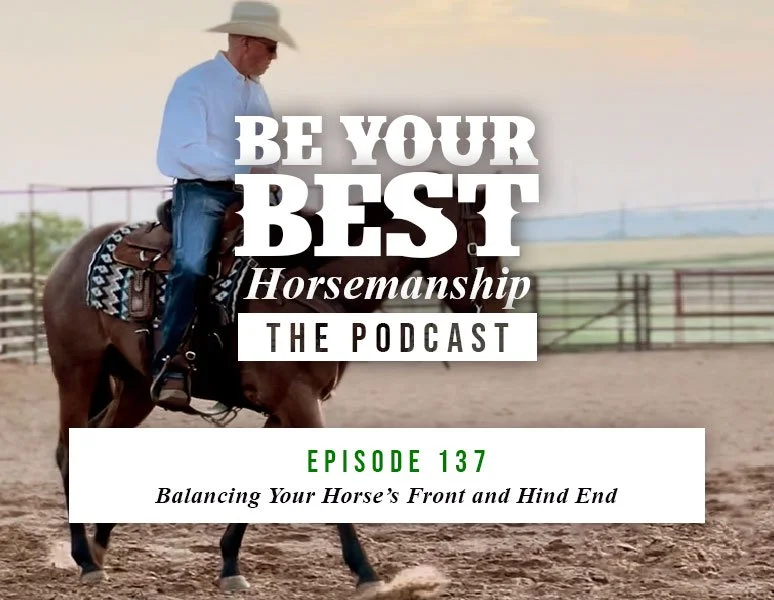Ep 137: Balancing Your Horse’s Front and Hind End
Horses naturally have 60-70% of their weight distributed on their front end. In performance events, this natural stance becomes problematic. When a horse is heavy in its front end, the front end becomes the pivot point. It is very difficult for the horse to perform the quick, athletic maneuvers we need when their pivot point is ahead of them. As a result, the horse will push against us and be resistant to the responses we are asking for.
Horses aren’t trying to push or fight against you most of the time. They are simply trying to stay balanced. Many of the advanced athletic maneuvers require them to be in a different body position than their natural front-end loaded, bilateral state.
Due to their natural body stance, your horse is always going to be front end loaded to some extent. But, we can try to help them shift more weight to the hindquarters so that they can be more mobile in the front end.
Counteracting a horse’s natural bilateral tendencies is a process that requires special attention to all five of the horse’s body parts–the head, neck, shoulders, ribcage and hindquarters. Of these five body parts, we tend to neglect the ribcage the most. We tend to focus on the parts of the body we can see. We do all sorts of exercises to soften the head and neck, to loosen up the shoulders, and to balance the hindquarters–but, the ribcage often gets put on the back burner. It is very important that the ribcage be just as mobile as the other parts of the body to avoid a horse moving like a 2’ x 4’ board. They have to be fluid in the ribcage in order to be fluid in the front end.
When working these five body parts, it’s important to remember that our horses are not going to maintain the same level of softness and control in competition. Picture yourself running a 50 yard dash–when you are trying to run as hard as you can, your muscles are going to be strained. Your muscles are going to be fully engaged, not relaxed. The same happens when your horse is putting forth maximum effort in a competitive run.
With this in mind, I estimate that about 30% of our horses’ softness is retained during a competitive situation. That is why it is so important to establish good feel and balance in all five of those body parts, and to reinforce these foundational movements on a regular basis. When speed is added, those foundational movements are what the horse defaults to.
“Be Your Best Horsemanship” is brought to you by Silver Lining Herbs, Classic Equine, Martin Saddlery, Better Horses Network, Purina, Healthycoat, CINCH, Starbar, and Clarifly. These brands have been part of the Phil Haugen Horsemanship team for many years, and their products continue to play an integral role in the success of our performance horse training program. To support these brands, visit our Sponsors tab.




